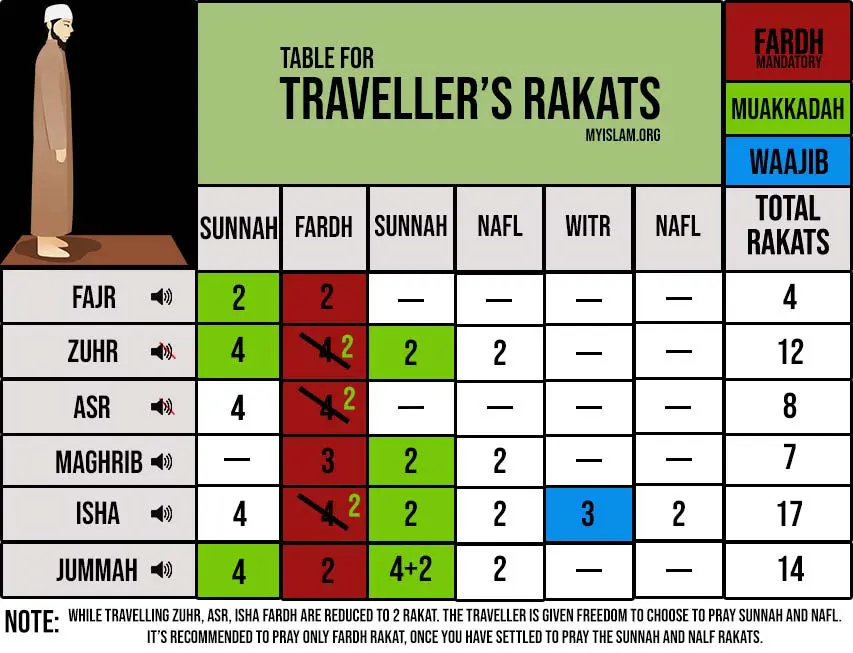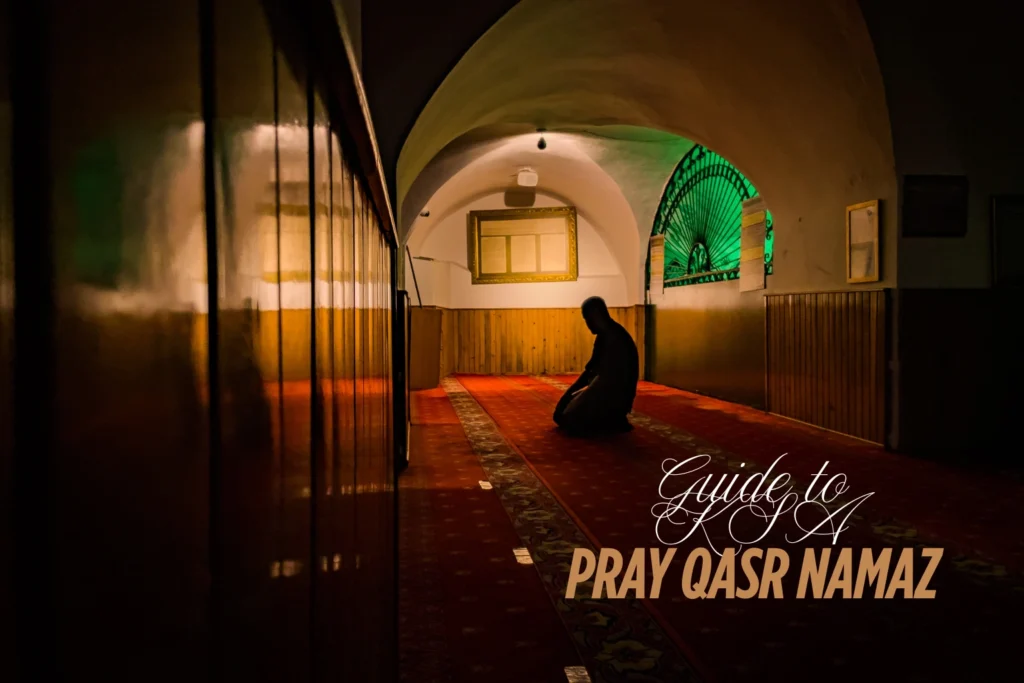When Muslims embark on a journey that meets the criteria for being considered a traveler (Musafir), they are required to perform a shortened version of the ritual pray qasr namaz. This practice is based on explicit instructions from the Prophet Muhammad (peace be upon him) and the consensus of Islamic scholars.
Is Qasr Prayer Optional?
- Performing the Qasr (shortened) prayer is an obligation (Wajib) for Muslims who meet the criteria for being considered a traveler (Musafir).
- The Prophet Muhammad (peace be upon him) himself practiced the Qasr prayer while traveling, setting the precedent for its mandatory nature.
- If a traveler were to intentionally pray the full (non-shortened) prayer, they would need to perform Sajda Sahu (prostration of forgetfulness) to rectify their mistake.
Defining the Distance of Travel (Min Safar) Pray Qasr Namaz
- The minimum distance a person must travel from their home city to be considered a Musafir is 80 km (approximately 48 miles).
- This distance is measured from the borders or outskirts of the city, not necessarily the center.
- Some schools of thought, like the Hanafi madhhab, consider a person a traveler even if they travel a shorter distance, as long as the intention is to stay less than 15 days.
- There is evidence from hadith that the Prophet Muhammad (peace be upon him) would offer the Qasr prayer even for stays up to 19 days in a location.

Number of Rakats for Pray Qasr Namaz – Individually
- For each of the daily prayers (Fajr, Dhuhr, Asr, Maghrib, Isha), the number of obligatory (Fard) rakats is reduced while traveling:
- Fajr, Dhuhr, Asr, and Isha are prayed with 2 rakats each.
- Maghrib remains at 3 rakats.
- The Witr prayer, which is Wajib (mandatory) for residents, becomes Sunnah (recommended) for travelers.
- This reduction in rakats is based on explicit instructions from the Prophet Muhammad (peace be upon him) and the consensus of Islamic scholars.
Pray Qasr Namaz Rules When Praying in Congregation (Jamaat)
- If the prayer is led by an imam who is a resident (not a traveler), the travelers must pray the full number of rakats (e.g., 4 for Dhuhr).
- When the imam is also a traveler, the travelers can pray the shortened Qasr version.
- If the imam is a traveler, the resident worshippers must pray the full number of rakats, even though the imam is performing Qasr.
- After the imam completes the Qasr prayer, the resident worshippers will stand up and complete the remaining rakats.
Combining Prayers While Traveling
Travelers are permitted to combine two prayers during a journey, such as:
- This combining of prayers is an option, not an obligation. Travelers may choose to pray each prayer separately as well.
- The intention to combine the prayers must be made before starting the first prayer.

Specifics of Qasr for Maghrib and Isha Prayers
- For Maghrib Qasr, the 3 Fard (obligatory) rakats must still be prayed in full.
- For Isha Qasr, only 2 Fard rakats are prayed, and the 3 Witr rakats become Sunnah (recommended) rather than Wajib (mandatory).
- This is because the Maghrib prayer already has the minimum 3 rakats, while Isha originally has 4 Fard rakats.
Conclusion
The rules and guidelines around Qasr prayer during travel are well-established in Islamic teachings, with the primary sources being the Quran, the hadith of the Prophet Muhammad (peace be upon him), and the scholarly consensus of the various schools of Islamic jurisprudence.
FAQs on Qasr Prayer While Traveling
1. Is Qasr prayer optional or mandatory for travelers?
Qasr prayer is not optional but rather an obligation (Wajib) for Muslims who meet the criteria for being considered a traveler. The Prophet Muhammad (peace be upon him) himself practiced the Qasr prayer while traveling, and if a traveler were to intentionally pray the full (non-shortened) prayer, they would need to perform Sajda Sahu (prostration of forgetfulness) to rectify their mistake.
2. What is the minimum distance (Min Safar) required to be considered a traveler and pray Qasr?
The minimum distance a person must travel from their home city to be considered a Musafir (traveler) is 80 km (approximately 48 miles). This distance is measured from the borders or outskirts of the city, not necessarily the center. Some schools of thought, like the Hanafi madhhab, consider a person a traveler even if they travel a shorter distance, as long as the intention is to stay less than 15 days.
3. How many rakats (units) should be prayed in each Pray Qasr Namaz?
For each of the daily prayers (Fajr, Dhuhr, Asr, Maghrib, Isha), the number of obligatory (Fard) rakats is reduced while traveling:
- Fajr, Dhuhr, Asr, and Isha are prayed with 2 rakats each.
- Maghrib remains at 3 rakats.
- The Witr prayer, which is Wajib (mandatory) for residents, becomes Sunnah (recommended) for travelers.
4. What are the rules for praying Qasr Salah in congregation (Jamaat)?
If the prayer is led by an imam who is a resident (not a traveler), the travelers must pray the full number of rakats (e.g., 4 for Dhuhr). If the imam is also a traveler, the travelers can pray the shortened Qasr version. However, if the imam is a traveler, the resident worshippers must pray the full number of rakats, even though the imam is performing Qasr.
5. Can I combine prayers while traveling?
Yes, travelers are permitted to combine two prayers during a journey, such as:
- Combining Dhuhr and Asr prayers
- Combining Maghrib and Isha prayers
This combining of prayers is an option, not an obligation. Travelers may choose to pray each prayer separately as well. The intention to combine the prayers must be made before starting the first prayer.


